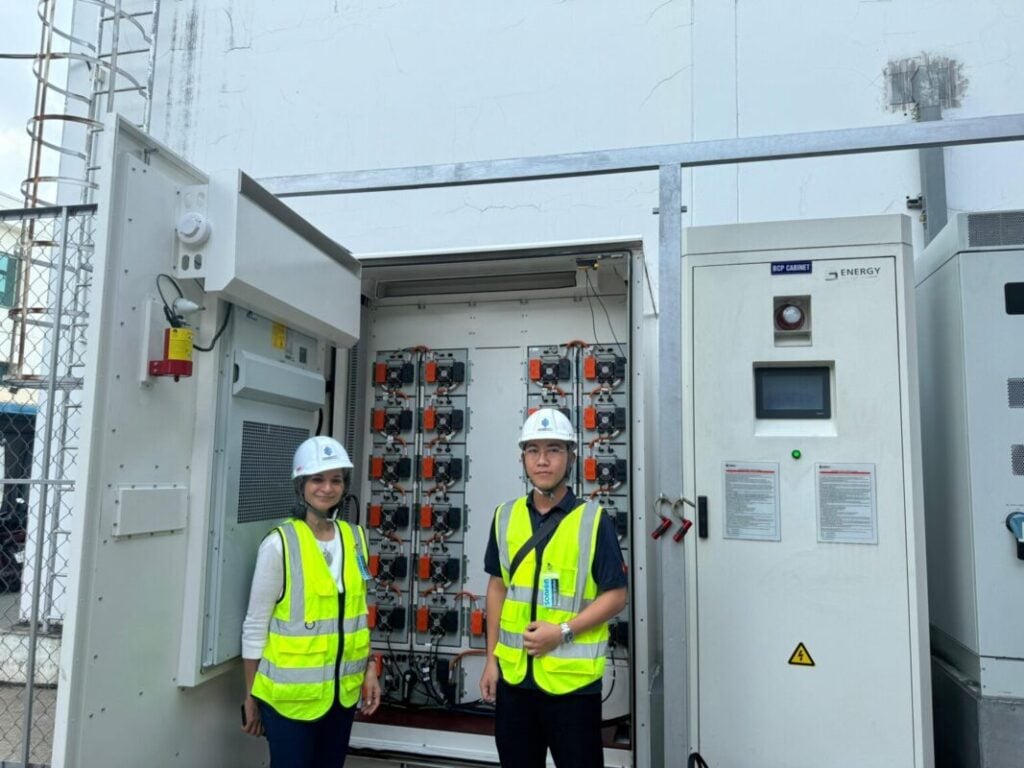
Climate and energy transition consultant Sunita Dubey reflects on the work done to put Vietnam on the global energy storage industry map and the ambitious pathway forward.
Vietnam’s energy sector is undergoing a rapid and remarkable transformation. Just a short time ago, the country’s national power plan, the Power Development Plan VIII (PDP8), had virtually no specific targets for battery energy storage systems (BESS).
The initial plan, approved in 2023, included only a minimal 300MW for BESS. This figure was a placeholder at best, not a serious target for a nation with such ambitious renewable energy goals.
My team and I recognised this critical gap. We knew that without a significant BESS target, Vietnam’s ambitious plans for solar and wind power would be unachievable due to grid instability. Working in close collaboration with the Institute of Energy / Ministry of Industry and Trade (MOIT), I designed a technical assistance package focused on analysis, conducted workshops, and shared global best practices.
Try Premium for just $1
- Full premium access for the first month at only $1
- Converts to an annual rate after 30 days unless cancelled
- Cancel anytime during the trial period
Premium Benefits
- Expert industry analysis and interviews
- Digital access to PV Tech Power journal
- Exclusive event discounts
Or get the full Premium subscription right away
Or continue reading this article for free
Our efforts demonstrated the vital role BESS plays in balancing a grid powered by variable renewable energy generation.
Through this sustained engagement, I made the point that BESS was not just a peripheral technology, but a fundamental necessity for a secure and sustainable energy future. This was fully aligned with the Net-Zero Goal by 2050 adopted by the Government of Vietnam and has potential to develop manufacturing base and create high paying green jobs.
The revised PDP8, approved in early 2025, now includes a groundbreaking BESS target of 10,000MW to 16,300MW by 2030. This monumental increase, from just 300MW to at least 10GW, is the first time Vietnam has set a serious, actionable goal for energy storage.
It’s a testament to government’s strategic thinking and power of targeted and well-designed technical assistance.
A strong policy signal: The drive to legislate for BESS technology
To turn this vision into reality, the Ministry of Industry and Trade (MOIT) is taking decisive action on the regulatory front. In early 2025, MOIT issued a series of circulars to lay the groundwork for BESS integration:
- Circulars 09/2025/TT-BCT and 12/2025/TT-BCT: These regulations provide the framework for BESS combined with renewable energy projects. They specify that concentrated solar power plants, for example, must install BESS with a minimum capacity equal to 10% of their installed capacity, capable of storing energy for at least two hours.
- Circular 17/2025/TT-BCT: This circular addresses BESS assets invested in by EVN Power Corporations for grid management purposes, outlining the method for cost recovery.
The next big step: A price mechanism for independent BESS assets
The MOIT is now drafting a new circular to address the most critical issue: an electricity generation service price for standalone, centralised BESS systems. The proposed framework introduces a crucial two-component price mechanism:
- Capacity Price: A fee for the system’s availability and readiness to provide power.
- Electricity Price: A charge based on the actual electricity output, or the energy discharged to the grid.
This two-part model, similar to the one being developed for pumped storage hydropower, is essential for providing a transparent, bankable revenue stream that can attract private investment for large-scale BESS projects.
The race to scale up: Projects and players
The market is already responding to these strong policy signals. Leading the charge are a few key players and projects:
- Marubeni and VinGroup: Their pilot BESS project in Nha Trang is a pioneering example of a third-party investment model, using the battery to optimise energy use and save costs at a commercial facility.
- EVN’s Pilot Project: Vietnam Electricity (EVN) has secured approval for a 50 MW/50 MWh pilot BESS project. This utility-scale initiative is designed to test the battery’s ability to provide crucial ancillary services like frequency control and peak shaving, which are vital for grid stability.
- Global and Local Industry: International firms like Fluence already have a manufacturing facility, while local players like T&T Group and VinFast Energy are developing their own BESS products and solutions.
These projects are more than just demonstrations; they are living laboratories providing invaluable data for policymakers to refine regulations and build an investor-friendly market.
What’s next: The path forward
The path forward is clear: Vietnam must move from pilot projects to full-scale commercial deployment. The government, with support from international partners, is actively working to address the remaining policy gaps.
The BESS market in Vietnam is at a pivotal moment. By finalising its pricing mechanisms, establishing a market for ancillary services, and clarifying technical standards, Vietnam can transform its ambitious PDP8 targets into reality.
The country is poised not only to secure its energy future but also to become a leading hub for energy storage in Southeast Asia.
About the Author
Sunita Dubey is a seasoned climate and energy transition leader with over 25 years of experience. She is renowned for her work in shaping global climate strategy, managing multi-million-dollar portfolios, and forging high-impact partnerships across Asia, Africa, and the Americas to drive inclusive, clean energy solutions.
Our publisher, Solar Media, will host the Energy Storage Summit Asia 2025 on 7-8 October 2025 in Manila, the Philippines. You can receive 20% off your ticket using the code ESN20 at checkout.
